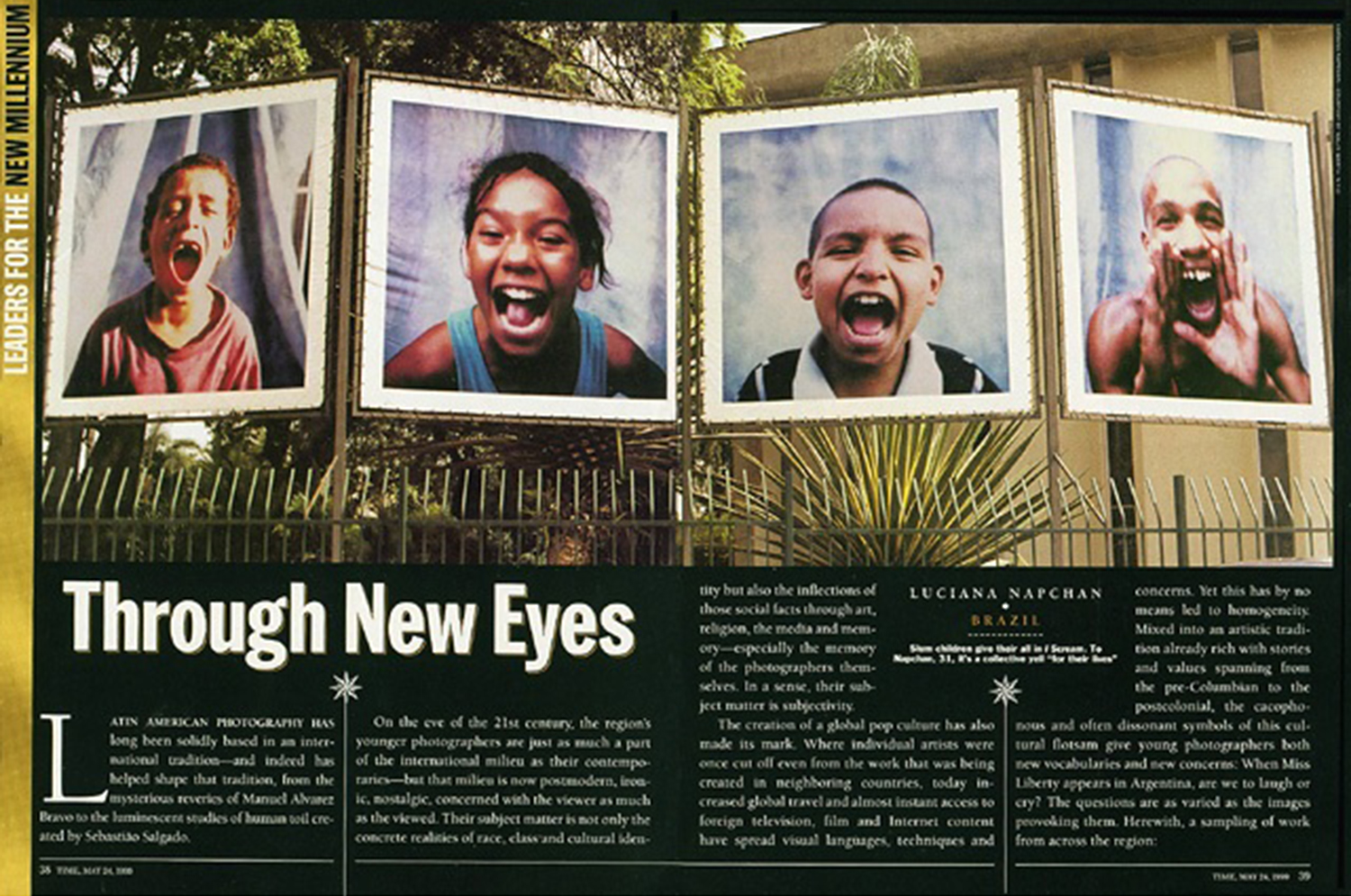

text review - Gilberto Dimenstein (1956 - 2020)
professor in human rights studies at Columbia University - US
It's so easy to hear the cries of these photos.
They are cries provoked by deafness - the deafness of a society that doesn't want to hear.
So easy to see the movement in these immobile faces.
They are so real, almost palpable, that they seem to jump out from the background sheets as if it was a dream.
So easy to see etched in these faces the "not" that have accumulated.
No to the right to cry out, to be heard.
They themselves have heard and remained silent.
Remained silent not because they wanted to.
But because they just wanted to survive.
Now, here, they are at the center.
They do not produce fear or indifference.
They fill the space up with the beauty of their eyes,
The unordered harmony of their cries,
the rebelliousness of their faces, luminous with the pleasure of letting it all out.
So easy to transform cries into melody,
Transform sounds into dreams.
So easy to hear the melody in the sound of freedom when we tune our ears to those who cry out and are by our side.
So easy to scare away deafness, opening our perceptions to a new harmony.
In their aesthetic rebelliousness, they make themselves heard so as to transmit a dream.
The dream of making streets forever of children, never of street children.
They are cries provoked by deafness - the deafness of a society that doesn't want to hear.
So easy to see the movement in these immobile faces.
They are so real, almost palpable, that they seem to jump out from the background sheets as if it was a dream.
So easy to see etched in these faces the "not" that have accumulated.
No to the right to cry out, to be heard.
They themselves have heard and remained silent.
Remained silent not because they wanted to.
But because they just wanted to survive.
Now, here, they are at the center.
They do not produce fear or indifference.
They fill the space up with the beauty of their eyes,
The unordered harmony of their cries,
the rebelliousness of their faces, luminous with the pleasure of letting it all out.
So easy to transform cries into melody,
Transform sounds into dreams.
So easy to hear the melody in the sound of freedom when we tune our ears to those who cry out and are by our side.
So easy to scare away deafness, opening our perceptions to a new harmony.
In their aesthetic rebelliousness, they make themselves heard so as to transmit a dream.
The dream of making streets forever of children, never of street children.
text review - Malin Barth,
curator "Personal Permanent Records"
exhibited at "The Art Museum of the Americas"
Washington, D.C. - US
curator "Personal Permanent Records"
exhibited at "The Art Museum of the Americas"
Washington, D.C. - US
Luciana Napchan has, over an extended period of time, been working with homeless children in Brazil, and commenting on their " Lost childhood".
She installs a sky blue painted backdrop as a make-shift studio in the streets and lets them pose, as they desire, playing out their own identity.
In the images, the sitters appear as heroes, due to the angle of which Napchan has taken the portraits and by the sizes she has originally presented them in. She prefers to shoot Polaroid pictures, so the children can instantly have a physical memory of the moment and a proof of their existence.
Napchan would then ask the children to scream as loud as they could for the image she would like to keep and develop into this project entitled "I Scream". This gave the children their opportunity and right to scream for ears willing to hear.
Napchan's oversized outdoor or/and indoor photographs are screams for their memories and lives.
The colorful portraits are statements of these street children's ' non-existing future. With her approach to the medium and presentation of her finished work in a public context, such an an outdoor and/or indoor exhibition, the images can clearly be looked upon as an original and valid contribution to social activism.
"I Scream" is giving voices to the otherwise forgotten children.
text review - Time Magazine
Latin America Photography has long been solidly based in an international tradition-and indeed has helped shape that tradition, from the mysterious reveries of Manuel Alvarez Bravo to the luminescent studies of human toil created by Sebastião Salgado.
On the eve of the 21st century, the region's younger photographers are just as much a part of the international milieu as their contemporaries - but that milieu is now postmodern, ironic, nostalgic, concerned with the viewer as much as the viewed. Their subject matter is not only the concrete realities of race, class and cultural identity but also the inflections of those social facts through art, religion, the media and memory -especially the memory of the photographers themselves. In a sense, their subject matter is subjectivity.
The creation of a global pop culture has also made its mark. Where individual artists were once cut off even from the work that was being created in their countries, today increased global travel and almost instant access to foreign television, film and Internet content have spread visual languages, techniques and concerns. Yet this has by no means led to homogeneity.
Mixed into an artistic tradition already rich with stories and values spanning from the pre-Columbian to the postcolonial, the cacophonous and often dissonant symbols of this cultural flotsam give young photographers both new vocabularies and new concerns: When Miss Liberty appears in Argentina, are we to laugh or cry? The questions are as varied as the images provoking them. Herewith, a sampling of work from across the region.